Home » Rocks » Verdite and Buddstone
Verdite and Buddstone
Green metamorphic rocks colored by fuchsite inclusions
Article by: Hobart M. King, PhD

Verdite: Photograph of a verdite specimen from the Archean of South Africa. Photograph by James St. John, displayed here under a Creative Commons license.
What is Verdite?
"Verdite" is a trade name used for grayish green to bright green metamorphic rocks that derive their color from abundant inclusions of fuchsite, a chromium-rich variety of muscovite mica. It often exhibits a foliated texture. The name verdite is from the Latin word viridis, which means "green".
Verdite is found at numerous locations in South Africa, the Kingdom of eSwatini (formerly Swaziland), and Zimbabwe. [1] [2] It is mined for use as an ornamental stone at many locations.
Verdite has a wide range of compositions that include: (A) primarily fuchsite [3], (B) fuchsite intergrown with other mica minerals [4], or, (C) a serpentine that contains enough fuchsite to impart a green color [6]. Verdite's hardness varies between 3 and 4 on the Mohs hardness scale, depending upon its composition.
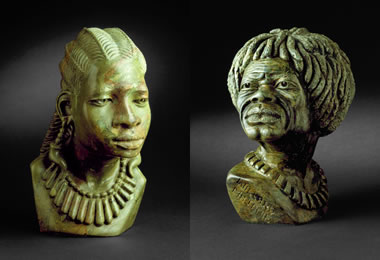
Verdite: Two sculptures carved from verdite by James Tandi. Verdite is sometimes called "Africa's green gold." Photos by The Natural History Museum (London) / Alamy Stock Photo.

Carved Ruby in Fuchsite (Verdite): A pendant carved from ruby in fuchsite in which the artist took advantage of the red rubies to produce flowers. Blue kyanite alteration rims can be seen around the rubies.
Uses of Verdite
Verdite is soft and it often has a uniform texture. Those properties make it a good stone for making small sculptures (see accompanying photos). The people of South Africa have used verdite for generations, and it is often considered to be part of their culture. [5]
Some verdite contains visible inclusions of red (ruby) corundum. Some sculptors have creatively integrated these red inclusions into their work (see accompanying photo). [1]
Verdite is sometimes used to make architectural products such as molding and wall tiles. These are used as interior facing stones. Verdite molding and tiles exported from South Africa to the United Kingdom have been used in prominent buildings, including the Bank of England and the South Africa House in London. [6]
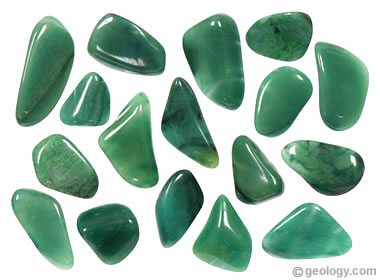
Buddstone: Tumbled stones made from buddstone - a green variety of chalcedony colored by flakes of fuchsite.
What is Buddstone?
Buddstone is a bright green variety of chalcedony that derives its green color from abundant inclusions of fuchsite mica. [2] As a chalcedony, buddstone has a hardness of about 7 on the Mohs scale - which makes it much more durable than verdite. It also polishes to a brighter luster. This makes buddstone the preferred material for making cabochons, beads, and tumbled stones.
| Verdite Information |
|
[1] Verdite and Ruby-Verdite from Zimbabwe, by R. R. Harding and E. A. Jobbins; Journal of Gemmology, Volume XIX, Number 2, Pages 150 to 159, April 1984.
[2] Dictionary of Gemmology, by P. G. Read; Butterworth and Company Publishers Ltd., 240 pages, 1982. [3] Verdite; a subject page on the mindat.org website, last accessed December 2021. [4] Gems, Their Sources, Descriptions and Identification, Sixth Edition, edited by Michael O'Donoghue; Butterworth-Heinemann, an imprint of Elsevier, 873 pages; 2006. [5] Gemstones of the World (fifth edition), by Walter Schumann; Sterling Publishing, 320 pages, 2013. [6] The Geology of the Jamestown Hills Area of the Barberton Mountain Land, South Africa, by C. R. Anhaeusser; Transactions of the Geological Society of South Africa, Volume 75, pages 225 to 263, 1972. |
Buddstone vs. Verdite
In nature, buddstone is often found in intimate association with verdite, and there is sometimes a gradient of one material into another. [6] People often use the names "verdite" and "buddstone" interchangeably - but there should be no confusion. The solution to this confusion is the Mohs hardness test. Buddstone (Mohs hardness of 7) is much harder than verdite (Mohs hardness of about 3 to 4).
Other Materials of Quartz and Fuchsite
Other rocks are also confused with verdite. Green aventurine is a quartzite colored by flakes of fuchsite. Macrocrystalline quartz sometimes has a green color caused by abundant fuchsite inclusions.
The jade minerals, jadeite and nephrite, have frequently been confused with verdite. This problem is compounded by some vendors who market verdite under the misnomer of "African jade".
Dyed quartzite and dyed chalcedony are also confused with verdite.
| More Rocks |
 |
Tumbled Stones |
 |
Fossils |
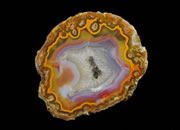 |
Geodes |
 |
The Rock Used to Make Beer |
 |
Topo Maps |
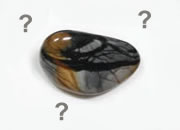 |
Difficult Rocks |
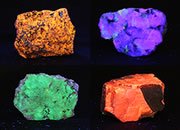 |
Fluorescent Minerals |
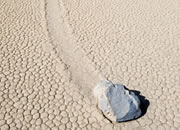 |
Sliding Rocks on Racetrack Playa |

Find Other Topics on Geology.com:

|

| ||

|

| ||

|

| ||

|

|
